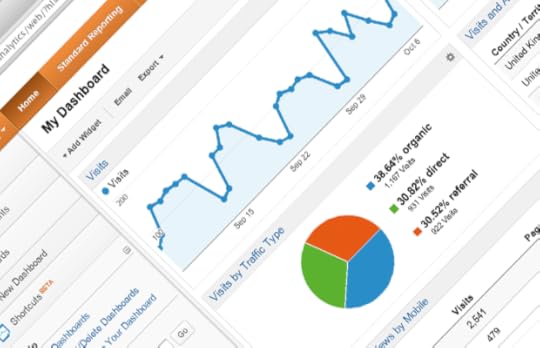Google PageRank for SEO
 Google PageRankDeciding upon what makes a Quality Backlink was at one time a simple matter of obtaining links from pages with a high Google PageRank. Things have however changed a great deal, with many other factors effecting how Google evaluates a link, including factors such as relevance, reputation and the quality of the linking website.
Google PageRankDeciding upon what makes a Quality Backlink was at one time a simple matter of obtaining links from pages with a high Google PageRank. Things have however changed a great deal, with many other factors effecting how Google evaluates a link, including factors such as relevance, reputation and the quality of the linking website.Whilst PageRank may have diminished in its own right with regard to overall ranking, it can still aid in your search for quality links as an indicator of the potential weight a link may offer if the previously mentioned attribute like relevance are also met.
What is PageRank?In a nutshell incoming links pointing to a web page are considered editorial votes for the page. In addition, some links are considered more valuable than others. PageRank is Google’s system for counting the votes (links) for a web page and uses them, combined with other factors, to determine how important or relevant a page may be.
Google’s technology page states; “The heart of our software is PageRank™, a system for ranking web pages developed by our founders Larry Page and Sergey Brin at Stanford University. And while we have dozens of engineers working to improve every aspect of Google on a daily basis, PageRank continues to play a central role in many of our web search tools.”
Understanding PageRankPageRank relies on the democratic nature of the internet by using its huge link structure to indicate an individual page’s value. In essence, a link from web page A to web page B is considered as a vote, by page A, for page B.
In reality, Google looks at many more factors than simply the sheer volume of votes, or links to a page; for example, it also analyzes the page containing the source of the link. Votes cast by web pages that are themselves considered important, provide more weight, helping to make other pages important.
Important, high-quality, and relevant pages usually receive a higher PageRank, which Google uses each time it conducts a search based on a users search query. Obviously Important pages mean nothing to you or a searcher if they don’t match the context of your query. Therefore, Google combines the PageRank score with other algorithms and text-matching techniques to find web pages (or other content) that are both important and relevant to your search.
These days this text analysis goes far beyond the number of times a word or phrase appears on a particular page (Keyword Density), and combines dozens of additional ranking factors related to the page’s content (and the content of those pages linking to it) to help determine if it is a good match for your search query and its position within search results. These factors include such subtleties as keywords on the linking page, the topic or nature of pages linking to the linking page, alternative word choices (on the target and linking page), and link location (links located towards the top of the content area are considered most relevant).
Google Toolbar PageRankA common source of confusion among webmasters new to SEO is the difference between PageRank (PR) and the Google Toolbar PageRank Score. PageRank is a numeric value calculated using an equation based on incoming links, outbound links on a page, and a few other qualifiers, whereas Google Toolbar PageRank is an integer value that is a representation of a pages position in a scoring system ranked from 1 to 10. The difference is one represents the actual PageRank value (worth) of a page, and the latter scores a page compared to others on the internet. The Google Toolbar (and other websites and utilities) will generally provide a page Toolbar Rank rather than the actual PR of a page.
PageRank (PR) are the actual values (based on links) that Google uses as part of its internal ranking algorithm. These scores are constantly being updated as Google crawls the web. In contrast, the Toolbar PageRank is simply a snapshot of internal PageRank, ranked against other sites, and usually updated every few months. This update frequency is decreasing of late, with only two updates performed in 2013, the first in February and again just in time for Christmas.
When you first develop and launch your website you may well see a non-existent or very low Toolbar PageRank score for your website or web pages. Don’t lose hope as this does not mean that your website is not collecting Internal PageRank credits; these will be reflected the next time a PR snapshot is performed and the Toolbar PageRank values are updated by Google. It’s likely that after a few weeks you will have gained some PageRank, and may see an increase in traffic as a result, even though Google Toolbar PageRank will still display your old score.
Using PageRankThere is still a valid place within SEO for PageRank to be used to help evaluate the value of an incoming link, the key word here is help, rather than rely upon.
When taking into account the relevancy of a page, it should also be considered that a pages PR flows through the links on the page equally, that is to say that the total PR for a page is then divided among the outgoing links contained on the page, therefore a page containing many outgoing links will dilute the PR of the page, and pages with less outgoing links will pass more Link Juice. For this reason seeking links from pages based on PR alone is not sufficient, we should seek links from high PR ranking pages within our topic or niche that are not too heavily diluted by outgoing links.
In addition to outgoing links, you should also evaluate a websites quality as you would your own. Does the site only link out to relevant sites? Is the site free of spelling and other mistakes? Are there obvious errors with scripts or markup? Use your knowledge of evaluating the quality of your own web pages when deciding if another page makes the grade
There are a number of tools available allowing you to view the Toolbar PageRank of a web page, the first and most obvious is Google’s own Toolbar, available for free from the search giant. There is also several plug-in utilities available for a number of browsers, including Firefox and Chrome, available from the appropriate plug-in or app store for your browser.
You could also use one of any number of websites that allow you to retrieve the Toolbar PageRank of any given web page or website URL, or even multiple pages, useful for checking out the competition!
PageRank Summary
Google PageRank calculates how important a page is, relatively speaking, compared to other pages on the web, based on links equating to votes for a page.Just one of numerous factors used to determine the ranking and relevance of a web page or website in search engine result pages.A high PageRank does not guarantee a high ranking in search results for any particular search term or keywords. If this were the case, sites with a Toolbar PageRank of 9 or 10 would dominate the result pages for any search you performed. The anchor (clickable) text of a link is often far more important than if it is located on a high PR page. It is however extremely important not to have all of your links as keywords as this looks unnatural. Link around a third using your keywords, another third using a combination of website name and website address (e.g.thesite.com), with the final third made up of generic terms such as “Click Here” etc.
Search RankAnother great way to find out which are the most relevant (and so best) pages to obtain links from is to think in terms of search rank. Perform a search for the words and phrases that you’d like your page to rank for and review the pages that appear highest in the search results.
These results are what Google considers the most important and relevant pages, and those that you should seek to obtain links from. Why? Well, because Google is telling you that for the keyword or phrase that you searched for, these are what are considered the most relevant results. Links to your site from these will be the most productive, more so if you can obtain a link from a “.org”, “.gov” or “.edu” domain as these carry additional weight and site authority status, as do older more established sites.
Published on February 13, 2014 00:07
No comments have been added yet.



